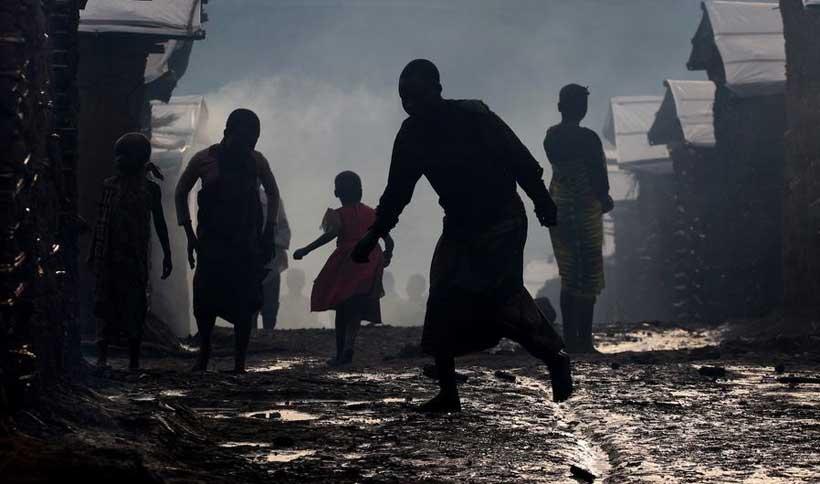By
Sahibzada M. Usman, Ph.D.
Africa-Press – Eritrea. In the volatile geopolitical climate of South Asia, the recent Pahalgam terrorist incident has reignited tensions between India and Pakistan, with India amplifying diplomatic efforts to label Pakistan as the epicentre of regional terrorism. Pakistan, however, dismisses these allegations as a calculated strategy to distort its global standing and obscure the intricate realities of the Indian Illegally Occupied Jammu and Kashmir (IIOJK). This polemic underscores a broader narrative: the enduring spectre of Al-Qaeda (AQ), a transnational jihadist network whose adaptive strategies and ideological resilience have perpetuated its influence across continents despite sustained counterterrorism offensives. From the ashes of its post-9/11 notoriety to its evolution into a decentralized franchise, AQ’s trajectory offers critical insights into the morphing nature of modern terrorism.
The dawn of the 21st century marked AQ’s zenith as a centralized entity capable of orchestrating catastrophic, high-profile attacks. The September 11, 2001, attacks epitomized its strategy of targeting Western symbols and “apostate” regimes to galvanize global jihad. This era witnessed synergistic collaborations with regional affiliates, such as Jemaah Islamiyah’s 2002 Bali bombings (202 casualties) and AQAP’s attempted airline bombings. These operations, characterized by meticulous planning and transnational coordination, aimed to destabilize governments aligned with Western powers and incite sectarian divisions.
However, the U.S.-led Global War on Terror dismantled AQ’s sanctuaries in Afghanistan, decimated its core leadership, and pressured state sponsors. By the mid-2000s, AQ pivoted to a decentralized model, empowering affiliates to exploit local grievances while adhering to its overarching ideology. In Pakistan’s Federally Administered Tribal Areas (FATA), AQ found refuge among Pashtun militias, leveraging anti-American sentiment post-2001 invasion. Similarly, in Yemen, AQAP capitalized on state fragility to launch attacks like the 2015 Charlie Hebdo shooting in Paris, demonstrating the franchise’s transnational reach.
AQ’s adaptability lies in its ability to embed within local conflicts, morphing its strategy to align with regional dynamics. In Saudi Arabia, AQ targeted oil infrastructure and expatriate compounds in the mid-2000s, aiming to topple the monarchy as a “puppet” of the West. Conversely, in Indonesia, Jemaah Islamiyah focused on soft targets, including tourist hubs and religious minorities, to erode interfaith cohesion. Pakistan’s tribal belt became a crucible for AQ’s survival, where it fused with Tehrik-i-Taliban Pakistan (TTP) to assault military installations and Shia communities, exacerbating sectarian strife.
This regional diversification underscores AQ’s dual strategy: maintaining ideological coherence while granting affiliates operational autonomy. The 2013 Westgate Mall attack in Nairobi by Al-Shabaab and the 2019 Naval Air Station Pensacola shooting by AQAP operatives exemplify this hybrid approach, localized violence with global jihadist branding.
Post-2010, AQ’s central leadership transitioned from direct command to a franchising model, offering ideological mentorship and limited logistical support. This shift ensured survival amid drone strikes and financial crackdowns. Groups like AQAP and AQIM (Al-Qaeda in the Islamic Maghreb) became semi-autonomous, focusing on domestic insurgencies while paying homage to AQ’s legacy. For instance, AQIM’s kidnapping-for-ransom operations in the Sahel funded regional cells, while AQAP’s propaganda magazine, Inspire, radicalized lone actors in the West.
This decentralization reduced AQ’s capacity for spectacular attacks but amplified its ideological permeation. The 2017 Manchester Arena bombing, executed by a lone wolf inspired by AQ’s online rhetoric, illustrates the potency of this “virtual caliphate.”
AQ’s digital pivot has been pivotal to its resilience. Online platforms disseminate sophisticated propaganda, from martyrdom videos to theological treatises, targeting disenfranchised youth in Europe, South Asia, and beyond. The 2015 Voice of Khurasan podcast and encrypted Telegram channels exemplify AQ’s media strategy, blending religious rhetoric with anti-imperialist narratives. This virtual ecosystem not only recruits lone actors but also sustains sleeper cells, as seen in Germany’s 2020 foiled plot against U.S. military bases.
While AQ’s ability to execute 9/11-scale attacks has waned, its ideological legacy thrives. Fragmented states like Syria, Libya, and Yemen remain fertile grounds for recruitment, while anti-Western sentiment in South Asia and Africa sustains its relevance. The 2021 Kabul withdrawal emboldened AQ-Taliban synergies, raising fears of a resurgence. Moreover, AQ’s ideological competition with ISIS has spurred innovation, as seen in its rebranded focus on “patience jihad”, a long-term strategy to erode state legitimacy through attrition.
Following Recommendations
Enhance multilateral intelligence-sharing to disrupt AQ’s digital recruitment networks and intercept lone actors.
Address socio-political grievances in marginalized regions through inclusive governance and economic development.
Strengthen counter-narrative campaigns via local religious leaders and tech partnerships to debunk extremist propaganda.
Invest in deradicalization programs focusing on ideological rehabilitation and community reintegration.
Sanction states providing tacit support to AQ affiliates, coupled with diplomatic pressure to enforce counterterrorism commitments.
Augment cybersecurity frameworks to monitor and dismantle AQ’s encrypted communication channels.
“Terrorism is a tactic, not an enemy. To defeat it, we must address the conditions that allow it to thrive.” Kofi Annan
Al-Qaeda’s metamorphosis from a centralized hierarchy to a diffuse ideological movement underscores the complexity of modern counterterrorism. As geopolitical rivalries, like the India-Pakistan standoff, risk overshadowing nuanced realities, a holistic approach, balancing security, diplomacy, and grassroots engagement, remains imperative to dismantling AQ’s enduring threat.
moderndiplomacy
For More News And Analysis About Eritrea Follow Africa-Press







